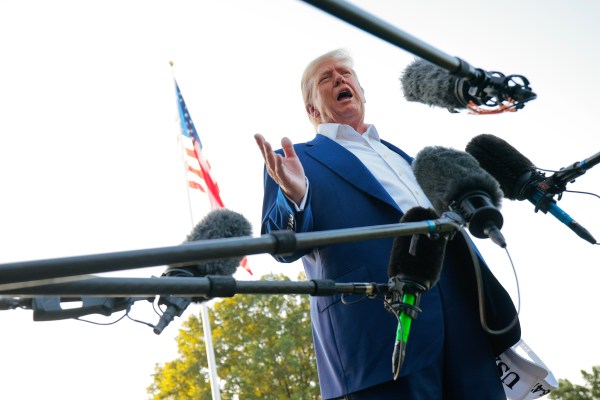Yascha Mounk, The Great Experiment: Why Diverse Democracies Fall Apart and How They Can Endure, New York: Penguin Press, 2022, 356pp., $28.00.
With its first two decades behind us, the 21st century is proving to be the age of identity politics. Around the globe, from America and the United Kingdom to France and Hungary, from Brazil and Turkey to Syria and India, struggles over identity have come to dominate political debate. In the United States, many factors have contributed to this: mass migration, economic inequality, stagnant middle-class incomes, a sea-change in sexual ethics, political polarization, renewed concern over racial justice, and the rise of populism. Democrats are in thrall to “woke” activists, while the post-Trump GOP responds with its own brand of working-class identity politics. Average citizens, meanwhile, find themselves suddenly wondering: Can we all just get along?
In The Great Experiment, Yascha Mounk, founder of the online newsletter Persuasion, sets out to answer that question. He is cautiously optimistic. The innate human tendency to divide into competing groups poses a stark challenge to left-liberal dreams of easy cosmopolitan harmony among diverse races, religions, and cultures (dreams that match Mounk’s own instinctive preferences, as he admits). But this same groupishness can be a source of social solidarity, binding people together rather than pitting them against one another. Furthermore, the significant gains made by underprivileged or oppressed minorities over the past 75 years demonstrate that our decisions, both political and personal, can mitigate the forces dividing us.
Mounk’s argument proceeds in three stages. In the first, after summarizing the psychological evidence for human “groupishness,” he analyzes the different problems from which diverse societies often suffer: anarchy, when conflict erupts among groups in the absence of a strong civil authority to keep the peace; domination, when one group oppresses others, either legally, as in slavery, or more subtly, by exercising hegemonic cultural influence; and fragmentation, when power-sharing schemes reinforce ethnic, religious, or linguistic lines. Institutions that foster interaction among groups can guard against these dangers but only when the groups meet as true equals, pursuing common goals with incentives for cooperation.
In part two Mounk gives us an ideal to aim for by articulating his vision of a flourishing, diverse democracy. He defends a classically liberal conception of the relationship between citizen and state. The state must be prevented from oppressing either citizens or associations, while also protecting individuals’ right to exit the various cultural groups to which they belong. Mounk defends a moderate patriotism that unites citizens around love of their shared culture. On the question of integrating immigrants, he takes a Goldilocks approach: the “melting pot” metaphor is too coercive, the “salad bowl” too fragmented, while his preferred (but underdeveloped) image of the “public park” strikes the right balance between respecting groups’ identities and encouraging interaction among them. Finally, he argues that because there is no going back from our increasingly diverse world, the real challenge is how to deal with it. A majority might try to retain its unofficial dominance; or we might reject that in favor of group particularity and identity politics; or—again Mounk’s preferred approach—we could strive for mutual understanding and empathy, foster group interaction, and focus on what we all share.
It is difficult to disagree with any of this, which is perhaps a sign of the book’s persuasiveness. Indeed, the Goldilocks metaphor is not a bad description of Mounk’s general approach: the Trumpists are too hot, the woke-folk too cold, but I, here in the center, am just right. Much of the time, I think, he is. But the book’s smooth hard-to-disagree-with-ness may also signal that Mounk sometimes avoids bringing latent difficulties to the fore. In defending a right to exit from groups, for example, he dodges a harder question, which is not about exit (how many of us really want people trapped within groups they cannot leave?) but rather about education and how strongly we encourage young children to associate with their groups at an age when the question of “exit” does not yet arise. Similarly, after defending a form of patriotism based not simply on shared civic principles but specifically on the love of a common culture, Mounk goes on in the next chapter to criticize the melting pot in favor of his “public park” image. But surely there is a tension here. The image of the park implies that what holds us together is something like rules of engagement—more like civic or constitutional principles than a shared culture. Some of us are out for a walk with the dog, others have gathered for a barbecue, over there a group is playing pick-up basketball, while some teenagers are listening to music and dancing amid the joggers hurrying past. That’s not an unappealing image, but it doesn’t include much by way of shared culture or interaction among groups. To be sure, in a book of this sort an author cannot follow up every argument in detail. But occasionally one does wonder whether all of these challenging problems can be solved in three or four pages each.
In the book’s third and final part, Mounk responds to those on both right and left who think diverse democracy cannot succeed,then concludes with a few practical suggestions. There are reasons, he says, to be optimistic about diversity. Despite lingering and stubborn inequalities, minority groups in America have made great strides in recent decades, in social integration, income, and education. More importantly, there is little reason to think that the United States will become a “majority-minority society” in which “whites” are permanently pitted against “people of color.” Racial self-identification is fluid and not always predictable; Asian Americans and especially Hispanics do not always identify as people of color. Furthermore, rates of interracial marriage have been growing rapidly, as have numbers of mixed-race Americans. “At least in their daily lives,” writes Mounk, “most Americans do not seem to buy into the monolithic opposition between whites and ‘people of color’”—nor should they be encouraged to. If anything, Mounk underestimates the importance of this. Twenty years from now, race may no longer be a category of great importance in our political life. If so, that would be cause for rejoicing.
Mounk’s concluding chapter, which begins with a brief apology for the difficulty of offering policy solutions for vast social problems, feels a bit like throwing things at the wall to see what sticks. He offers a range of suggestions for fostering an inclusive, egalitarian society in which citizens and the groups to which they belong flourish and interact. These include the promotion of economic growth through spending on research and development; assuring that access to the benefits of growth are shared by means of progressive taxation, a global minimum tax rate for corporations, and apprenticeship programs; an expanded social safety net including access to health care, paid family leave, and perhaps a basic income; expanded access to education; an end to race-conscious policies; changes to rules in the House of Representatives that would let less partisan bills come up for debate; ranked-choice voting; and the use of nonpartisan districting commissions to end gerrymandering. None of these suggestions receives much discussion; some are advanced in only a single sentence. What Mounk does not mention is also sometimes of interest. For example, his criticism of race-conscious policies seems to imply an end to affirmative action; but those two words appear only once in the book, in a very different context and without discussion. Similarly, on the topic of educational access, Mounk mentions the not-very-interesting idea of early childcare and (I infer) pre-K schooling, but he says nothing about charter schools or school choice.
If his final recommendations are somewhat unsatisfying, Mounk has nevertheless written a valuable book on a pressing issue. He is surely right that advanced democracies cannot now become less diverse, even if they wanted to, without paying an unacceptable moral and political price. And his vision of a world in which group membership matters but is not all-consuming, and in which citizens of different backgrounds and convictions feel solidarity and cherish a shared public culture, is an appealing one. His Goldilocks approach to many questions will likely garner criticism from both right and left, but he is gesturing beyond the polarization that currently divides us and toward a democratic future that is worth working for.






Please note that we at The Dispatch hold ourselves, our work, and our commenters to a higher standard than other places on the internet. We welcome comments that foster genuine debate or discussion—including comments critical of us or our work—but responses that include ad hominem attacks on fellow Dispatch members or are intended to stoke fear and anger may be moderated.
With your membership, you only have the ability to comment on The Morning Dispatch articles. Consider upgrading to join the conversation everywhere.